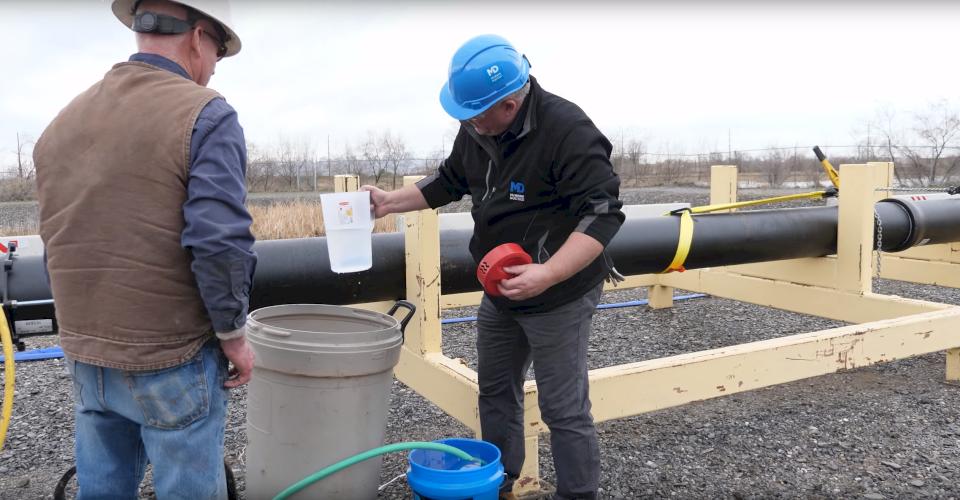Hydrostatic testing is a process of testing pressurized equipment, such as pipelines, tanks, and pressure vessels, to ensure their safety and reliability. The test involves filling the equipment with water and pressurizing it to a predetermined level for a specified period, typically for several hours. The equipment is then inspected for any leaks, deformations, or other defects that could compromise its safety. Hydrostatic testing is an essential process for ensuring the safety of equipment that operates under high pressure, as any failure could result in catastrophic consequences. This article will discuss the importance of hydrostatic testing in ensuring equipment safety and how it is performed.
Why Is Hydrostatic Testing Important?
Hydrostatic testing is an important process for ensuring the safety of equipment that operates under high pressure. Such equipment is used in various industries, such as oil and gas, chemical, and petrochemical, where failure of the equipment could result in injuries, deaths, or environmental damage. Hydrostatic testing helps to identify any defects or weaknesses in the equipment that could lead to failure, allowing them to be addressed before the equipment is put into service. This reduces the risk of catastrophic failures, which could result in loss of life, property and costly downtime.
Hydrostatic testing is also important for Compliance with regulatory standards. Various regulatory bodies, such as the American Society of Mechanical Engineers (ASME) and the Occupational Safety and Health Administration (OSHA), require that pressurized equipment be tested periodically to ensure their safety. Compliance with these standards is necessary to avoid penalties, fines, and legal liability.
How Hydrostatic Testing Is Performed?
Hydrostatic testing is performed by filling the equipment with water and pushing it to a specified level, which is typically 1.5 times the maximum acceptable working pressure (MAWP). The pressure is maintained for a certain length of time, usually several hours, while the equipment is inspected for leaks, deformations, or other flaws that might jeopardize its safety.
Before executing the test, the equipment must be completely cleaned and drained of all fluids and debris. Any valves or openings must be sealed to prevent water from escaping. The apparatus is then filled with water, and the air is purged from the system to guarantee that there are no air pockets that might alter the test findings.
The equipment is then pressurized to the predetermined level using a pump or other pressurizing device. The pressure is maintained for a specified period, typically for several hours, while the equipment is inspected for any leaks, deformations, or other defects that could compromise its safety. The inspector will use various methods, such as visual inspection, ultrasonic testing, or X-ray inspection, to identify any defects or weaknesses in the equipment.
After the test is completed, the equipment is drained and dried, and any defects or weaknesses are repaired or replaced. The equipment is then retested to ensure that it is safe for use. While hydrostatic testing is essential for ensuring equipment safety, advancements in technology have led to the development of new testing methods such as boost testing, which can provide additional insights and improve the accuracy of test results.
Benefits Of Hydrostatic Testing
Hydrostatic testing offers several benefits for equipment safety, including:
- Identifying Defects And Weaknesses: Hydrostatic testing helps to identify any defects or weaknesses in the equipment that could lead to failure, allowing them to be addressed before the equipment is put into service. This reduces the risk of catastrophic failures, which could result in loss of life, property and costly downtime.
- Compliance With Regulatory Standards: Hydrostatic testing is necessary for Compliance with regulatory standards, like ASME and OSHA standards. Compliance with these standards is necessary to avoid penalties, fines, and legal liability.
- Extending Equipment Life: Hydrostatic testing can help to extend the life of the equipment by identifying and repairing any defects or weaknesses before they cause a failure. This reduces the need for costly repairs or replacements and can improve the reliability of the equipment, reducing downtime and increasing productivity.
- Ensuring The Safety Of Personnel And The Environment: Hydrostatic testing helps to ensure the safety of personnel and the environment by identifying any potential hazards or leaks in the equipment. This allows for repairs to be made before the equipment is put into service, reducing the risk of injury, environmental damage, or costly cleanup operations.
- Cost-Effective Maintenance: Hydrostatic testing is a cost-effective way to maintain pressurized equipment, as it allows for defects or weaknesses to be identified and repaired before they cause a failure. This reduces the need for costly repairs or replacements and can improve the reliability of the equipment, reducing downtime and increasing productivity.
